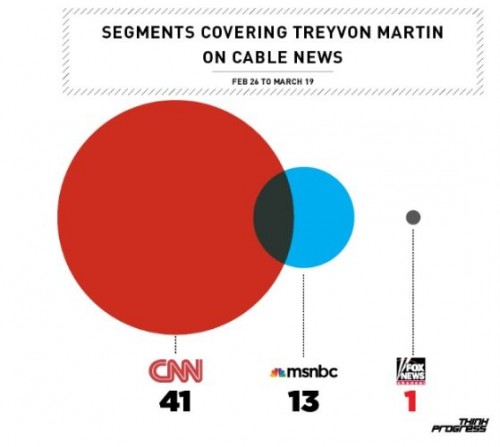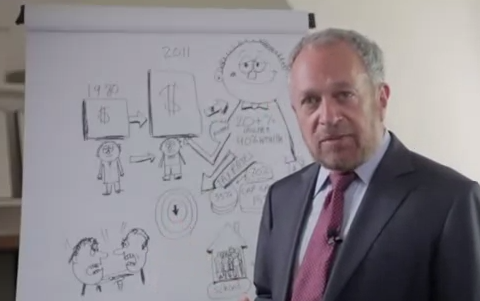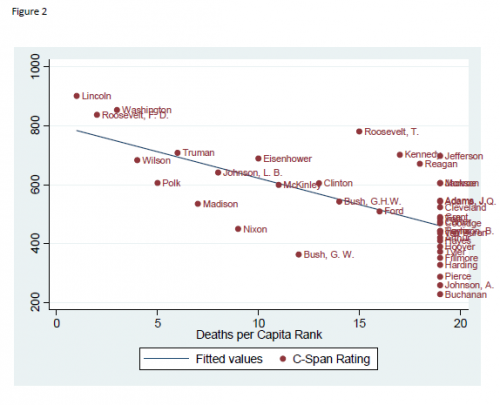Cross-posted at Montclair SocioBlog.
By now, you have heard about the killing of Trayvon Martin. But when did you first hear about it? If you’re a news junkie and were watching the national news channels, the answer to that question might well depend on which one you watch. ThinkProgress counted the number of stories about this killing on three cable news outlets in the week following the event.
Megan McCardle interprets the data as an example of “the Availability Heuristic, a rule of thumb that says the frequency of an event should correspond to how quickly you can think of examples of it.” The Availability Heuristic makes us overestimate the risk of shark attacks. The Availability Heuristic is probably behind my students’ writing confidently that teenage pregnancy has been steadily rising (thank you, MTV).
McCardle looks at the graph and sees a reason for different perceptions of racism as a problem:
…the disparity here may have something to do with whether one thinks institutional racism remains a serious problem in the United States. Conservatives often seem to think it isn’t, and that if anything, the real problem is how often spurious charges of white racism are deployed by their political opponents, while liberals more often tend toward the opposite view. Maybe both groups are drawing justified inferences from the data they’re seeing.
Do Fox viewers discount racism because of what they see? Or is the network disparity more an example of another cognitive wiring problem – Confirmation Bias? Confirmation bias is our tendency to seek out and to remember information that fits with our existing ideas. Faced with information that clashes with that world view, we ignore, forget, distort, or misinterpret.
In Foxland — the world of both those who create Fox news and those who consume it — racism is not a real problem. A story of a white Hispanic man armed with a 9mm chasing down and shooting a black teenager armed only with Skittles has no place in that world. The Fox news producers don’t want to tell that story, and the viewers don’t want to hear it. In the days since this graph appeared, the story has become too big for even Fox to ignore. I would imagine that Fox will instead interpret the events so as to fit with the view that McCardle suggests — that whites are the victims. If you watch Fox, get ready to hear a lot about self-defense.













